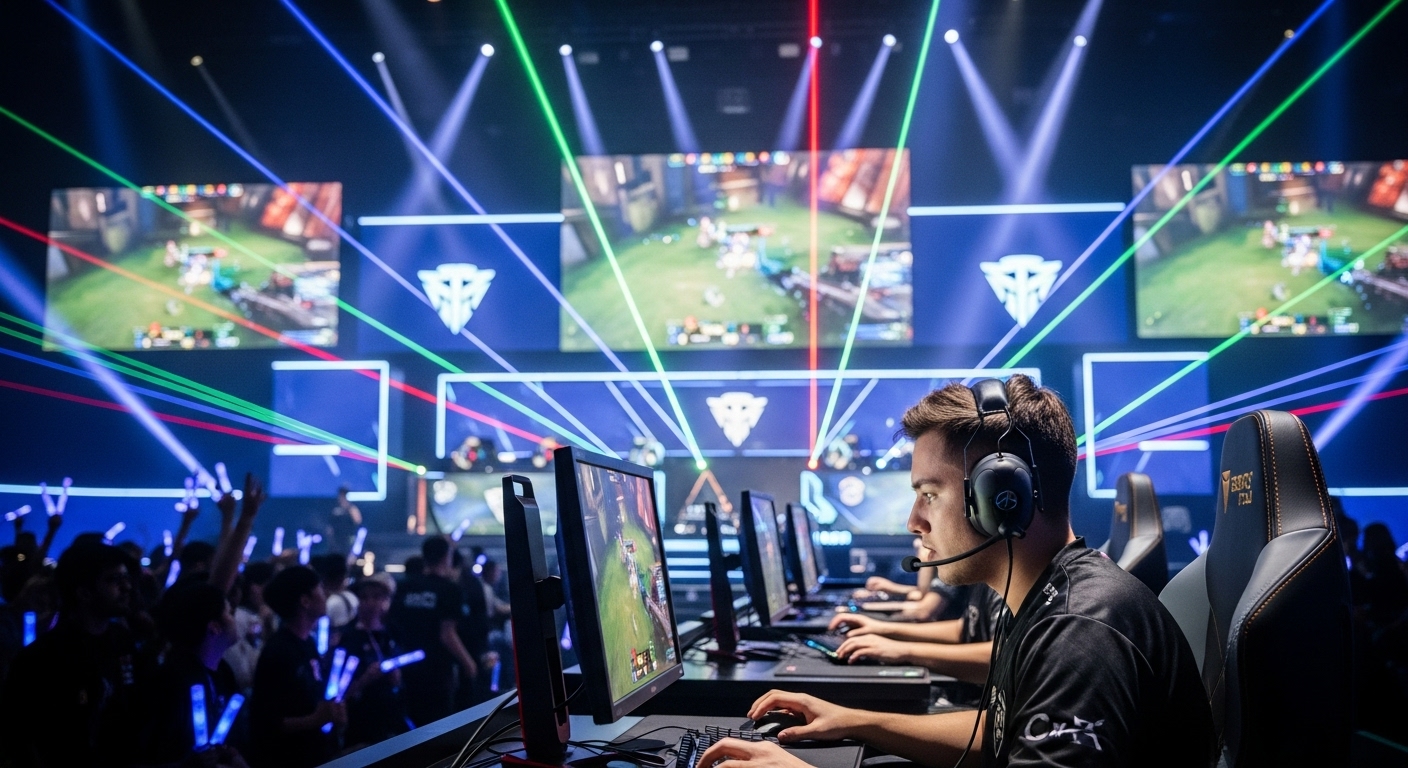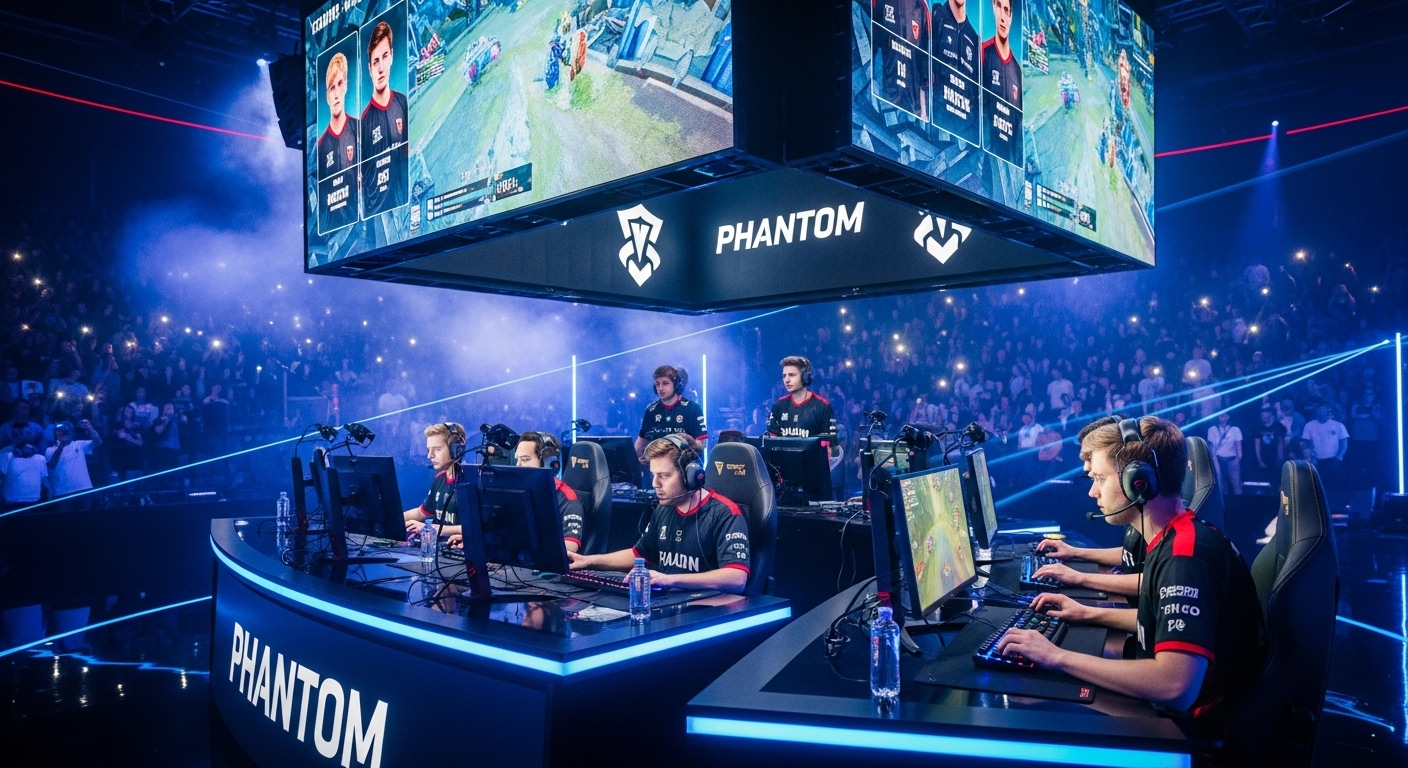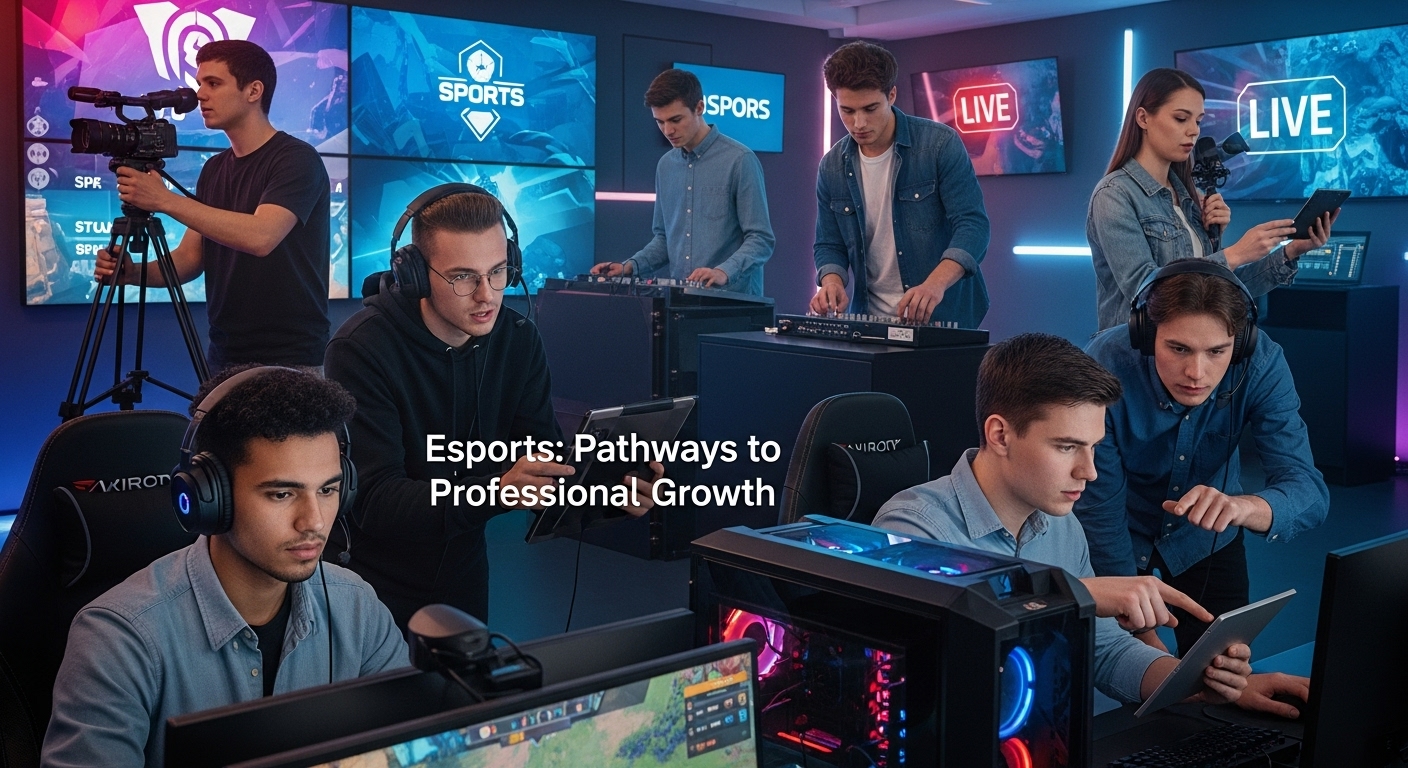The esports industry has rapidly evolved from small community tournaments into a billion-dollar entertainment powerhouse. As teams, organizations, and event organizers explore ways to sustain and grow their operations, merchandise has emerged as a crucial source of revenue. Jerseys, hoodies, hats, and other branded goods have become more than just fashion items—they represent identity, loyalty, and pride for fans and players alike. In this blog, we will explore how merchandise plays a vital role in fueling esports revenue, from team branding and fan engagement to global marketing and community culture.
The Rise of Esports as a Global Industry
In the past decade, esports has grown from being a niche hobby into a global industry with millions of fans and professional players. Games like League of Legends, Dota 2, Counter-Strike, and Valorant have become household names, each supported by massive professional ecosystems. Prize pools reach tens of millions of dollars, while tournaments are watched by millions of viewers worldwide.
This growth has led to new business models for esports organizations. Sponsorships, streaming rights, ticket sales, and digital goods all contribute to revenue streams. However, one of the most tangible and emotionally driven sources of income is merchandise. Fans want to wear their favorite team’s colors, display their loyalty, and feel part of the larger esports community. Merchandise fulfills this desire and generates consistent revenue in return.
Why Merchandise Matters in Esports
Unlike traditional sports that have existed for decades, esports is still finding its footing in terms of long-term financial stability. Merchandise provides a sustainable, fan-driven form of revenue that supports teams and organizations beyond seasonal competitions.
The emotional connection between fans and their favorite players or teams is powerful. When fans buy a jersey, hoodie, or cap, they are not merely purchasing clothing—they are investing in a sense of belonging. Merchandise is a physical representation of digital passion. It transforms online fandom into something tangible, allowing fans to express their enthusiasm publicly.
Moreover, merchandise sales help esports teams diversify income, reducing dependence on sponsorships or tournament winnings. This diversification is critical for ensuring stability in an industry where results can fluctuate from one season to the next.
Branding: The Heart of Esports Merchandise
Merchandise begins with branding. Successful esports organizations understand that their logo, colors, and visual identity are essential for building a loyal fanbase. Teams like FaZe Clan, G2 Esports, and Team Liquid have developed strong branding strategies that extend far beyond gameplay. Their merchandise lines are comparable to streetwear brands, appealing to both gamers and non-gamers alike.
A well-designed logo and consistent visual style make merchandise more desirable. Fans are drawn to designs that stand out, represent excellence, and carry meaning. For instance, a limited-edition hoodie featuring a championship logo or collaboration with a popular designer can become a collector’s item.
Strong branding not only boosts merchandise sales but also enhances the perception of the organization. A team with a recognizable brand becomes a lifestyle choice, not just an esports entity. This transformation from team to brand opens up endless opportunities for collaboration and expansion.
Fan Loyalty and Emotional Connection
Merchandise thrives on emotion. Fans do not buy jerseys simply because they are stylish—they buy them to feel connected to their favorite players and to show allegiance. In esports, where most fan interactions happen online, merchandise bridges the gap between the digital and physical worlds.
When a fan wears a team’s shirt, they express identity and belonging. They become ambassadors of the brand, spreading awareness and pride. Merchandise turns spectators into participants, fostering a deeper bond between fans and organizations.
Limited edition drops and exclusive collections also strengthen loyalty. When fans know that a certain item is available for a short period, it creates urgency and excitement. The emotional value of owning rare merchandise can often outweigh the physical product’s worth. This dynamic keeps fans engaged and encourages repeat purchases.
The Role of Collaboration and Partnerships
Collaborations between esports organizations and mainstream fashion brands have elevated merchandise to new heights. These partnerships combine the appeal of esports with the credibility of established fashion labels. Collaborations often generate significant attention, attracting both gamers and general consumers.
For example, when an esports team partners with a well-known clothing brand, it brings legitimacy to the gaming industry in the eyes of the public. It also allows the team to access advanced design, marketing, and distribution capabilities. The result is high-quality merchandise that appeals to a broader audience.
Collaborations also enable cross-promotion. A popular streetwear brand can introduce esports to new customers, while the esports team brings gaming culture into the fashion space. This synergy not only increases revenue but also enhances cultural relevance.
Limited Edition Drops and Scarcity Marketing
One of the most effective strategies in esports merchandise sales is the use of limited edition drops. Scarcity marketing—where availability is limited to a small quantity or short timeframe—creates a sense of exclusivity. Fans are eager to secure items before they sell out, often leading to sold-out releases within hours.
This strategy mirrors the approach used by major streetwear brands. By treating merchandise as collectible rather than merely wearable, esports teams tap into fan psychology. Owning a rare hoodie or jersey becomes a symbol of dedication and community status.
These limited releases also create social media buzz, as fans post photos of their purchases and share excitement online. This organic marketing boosts brand visibility and drives future sales without the need for large advertising campaigns.
Online Stores and Global Reach
Digital platforms have revolutionized how esports merchandise is sold. Teams now operate their own online stores, allowing them to reach fans worldwide. With just a few clicks, a supporter from any country can order merchandise and have it shipped directly to their home.
This global accessibility is one of the biggest advantages of esports merchandise. Unlike traditional sports that rely heavily on local fans attending matches, esports is inherently international. Online stores allow organizations to serve a global audience, from North America to Europe to Asia.
The integration of e-commerce tools, such as personalized recommendations, bundle discounts, and loyalty programs, also enhances the shopping experience. Fans can easily find products related to their favorite players, events, or tournaments, ensuring a seamless purchasing journey.
Event Merchandise: Tournaments and Championships
Esports events and tournaments are prime opportunities for merchandise sales. From regional competitions to global championships, fans flock to live venues eager to take home souvenirs. Event-exclusive merchandise, such as limited-edition shirts or collectible pins, holds significant sentimental value.
Tournament merchandise does more than generate revenue—it also preserves memories. Fans associate specific items with unforgettable matches or personal experiences. Wearing a jersey from a world championship allows them to relive those moments long after the event ends.
Furthermore, merchandise booths at events encourage impulse buying. The excitement of being surrounded by other passionate fans creates a buying atmosphere that online stores cannot replicate. Event merchandise thus serves as both a revenue booster and a community builder.
The Economics of Esports Merchandise
From a financial perspective, merchandise is a reliable and scalable source of income. While sponsorships depend on brand deals and tournament winnings fluctuate, merchandise sales are more predictable. A successful release can generate significant profit with relatively low production costs.
The economics of merchandise also depend on design quality, pricing strategy, and marketing. Teams that invest in professional design, premium materials, and compelling storytelling around their products often see better results. Merchandise pricing must strike a balance between accessibility and perceived value.
Additionally, digital merchandise—such as virtual jerseys or in-game cosmetics featuring team logos—represents a growing revenue stream. As games integrate esports branding into their ecosystems, fans can support their favorite teams both physically and digitally.
The Influence of Player Personalities
Professional players are not just competitors—they are influencers with massive online followings. Their personalities, streaming content, and fan interactions significantly impact merchandise sales. When a popular player promotes a new product or wears a team hoodie during a stream, it immediately attracts attention.
Players serve as living advertisements for their organizations. Fans who admire them often want to emulate their style, leading to increased sales of player-branded merchandise. Some players even have their own signature collections, adding a personal touch to team branding.
The relationship between players and merchandise underscores the importance of authenticity. Fans can easily distinguish between genuine endorsements and forced marketing. When players truly believe in their team’s brand, their enthusiasm translates into stronger fan engagement and loyalty.
Esports Merchandise as a Lifestyle
Over time, esports merchandise has evolved beyond fan gear into a lifestyle statement. The rise of gaming culture in mainstream media has made esports apparel fashionable even for people who do not actively watch competitions. Streetwear-style designs, minimalist logos, and modern cuts make these products suitable for everyday wear.
This trend has allowed esports organizations to enter the broader fashion market. Merchandise now serves a dual purpose—representing team pride and appealing to fashion-conscious consumers. Some organizations have launched full-fledged fashion lines, blurring the line between gaming apparel and urban streetwear.
By merging esports identity with modern fashion, teams create a powerful cultural presence. Their merchandise becomes part of youth culture, influencing trends and establishing esports as a lifestyle rather than just a pastime.
Challenges in Esports Merchandise
Despite its potential, the esports merchandise industry faces several challenges. One major issue is oversaturation. With many teams releasing frequent collections, fans may experience fatigue, reducing excitement for new drops. Maintaining quality and creativity is essential to keep merchandise appealing.
Counterfeit merchandise is another problem. Unofficial sellers often copy designs and sell them at lower prices, undermining brand value. Esports organizations must invest in brand protection and educate fans about purchasing authentic products.
Inventory management and logistics also pose difficulties, especially for global sales. Ensuring consistent quality and timely delivery requires careful coordination with manufacturers and distributors. Poor experiences in these areas can harm a team’s reputation and discourage future purchases.
The Future of Esports Merchandise
The future of esports merchandise lies in innovation, personalization, and sustainability. As technology advances, fans may soon enjoy customized items featuring their names, favorite teams, or even virtual avatars. 3D printing and on-demand manufacturing could make personalized merchandise accessible to everyone.
Sustainability will also play a key role. With growing awareness about environmental impact, fans increasingly prefer eco-friendly materials and ethical production practices. Esports organizations that prioritize sustainability can appeal to conscious consumers and set new industry standards.
Additionally, the rise of digital fashion and metaverse platforms could revolutionize how merchandise is experienced. Fans might soon wear virtual team jerseys in digital environments, merging fashion with virtual identity. These digital assets can provide new monetization opportunities while maintaining the essence of fandom.
The Cultural Impact of Esports Merchandise
Beyond economics, merchandise plays an important cultural role. It symbolizes the unity of global gaming communities and celebrates the diversity of players and fans. Wearing an esports jersey can connect someone in Asia with another fan in Europe, creating a shared identity that transcends borders.
Merchandise also empowers fans to express themselves. It reflects their passions, values, and sense of belonging. In a world where digital entertainment dominates, owning physical or digital esports merchandise provides a unique sense of pride and authenticity.
As esports continues to grow, merchandise will remain a vital expression of community spirit. It reminds everyone that esports is not just about competition—it is about connection, creativity, and culture.
Conclusion: Merchandise as the Lifeblood of Esports Revenue
Merchandise has proven to be much more than a financial asset in esports—it is the lifeblood of fan engagement, branding, and identity. It connects organizations with their audiences, transforms players into icons, and builds communities that extend far beyond the screen.
As the esports industry continues to mature, merchandise will only grow in significance. With the right mix of creativity, authenticity, and innovation, it can sustain teams, empower fans, and fuel the next generation of gaming culture.



